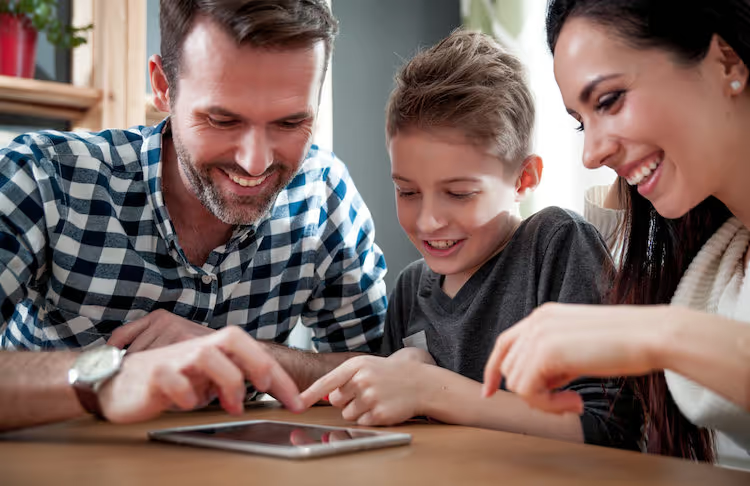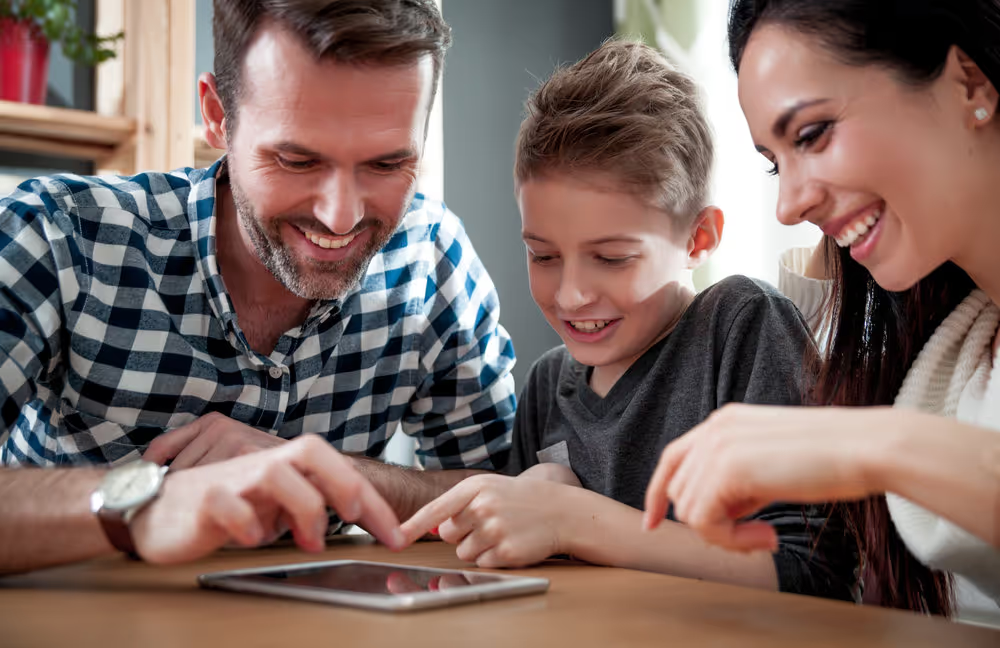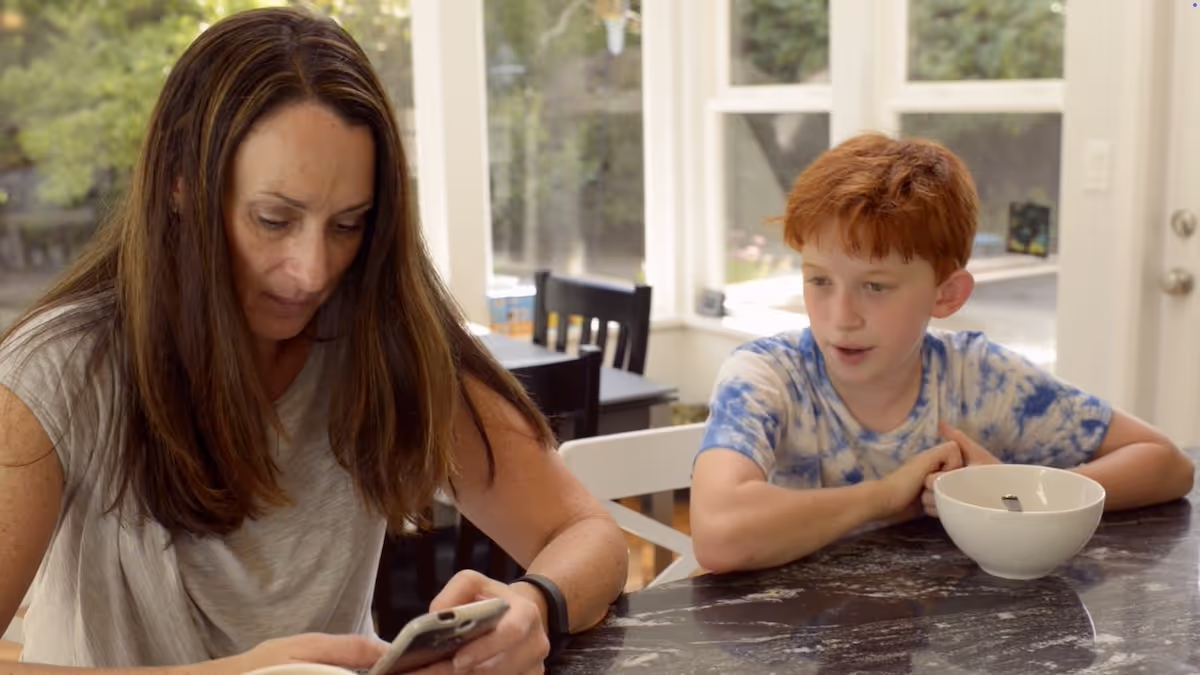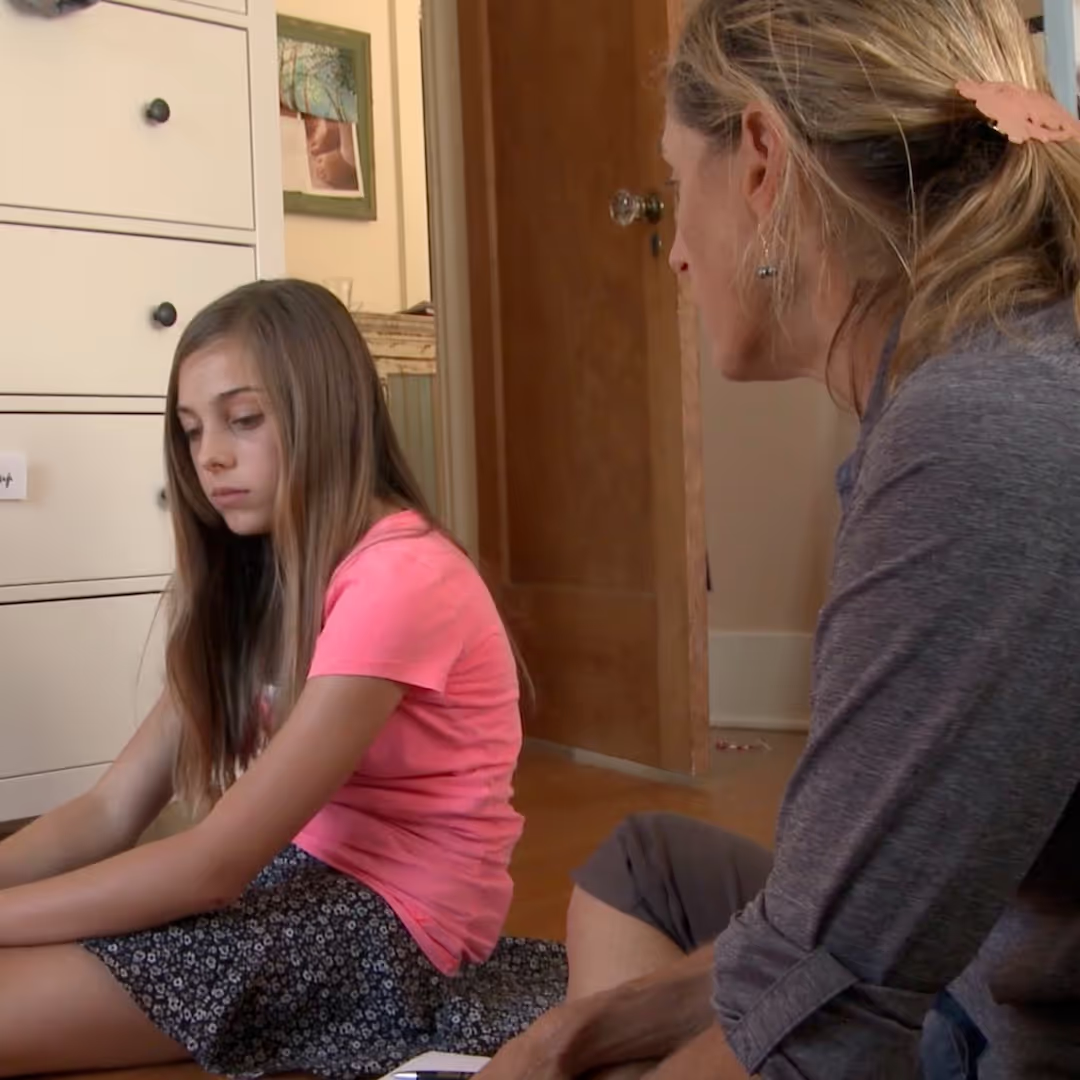



Spending more time talking with youth about all the cool things on screens paradoxically makes them more receptive to talking about ways to limit screen time. Here’s why:
Kids and teens consistently tell me, “Parents just don’t understand. They don’t see why my screen time is so important.” Meanwhile, kids see headlines about screen time ruining them. It is no wonder they do not believe we see the positives. Yet, I often think to myself that if I had decided to make a film about all the positives of the tech revolution, it would be a SUPER long movie, think Gone with the Wind on steroids many times over. The fact that screen time is so appealing is precisely why we are here at this moment working to create balance for our youth.
A wonderful psychiatrist told me something that I repeat to myself often: “People want to be understood about why they want something as much as they actually want something.” I consistently find this to be true in my work as a doctor and in my work with youth (and in my relationships with all people).
In my work, for example, I will see patients who have mild low back pain for just a few days and will ask to have an x-ray. I empathetically paraphrase back to them what they have said and add that it makes sense that they would think such a test could be helpful. I can see it in their facial expressions when they feel heard. I then explain the reasons why such a test would not actually serve them well. This simple technique leaves patients feeling positive about their encounter and consequently more satisfied without getting an x-ray.
In my work with youth around screen time, I use a similar approach. When I talk in schools I always start by asking students what they love about screen time. It is such a fun conversation starter, and I see their faces light up. I tell them that it makes perfect sense that they would enjoy so many things on screens. For example, who wouldn’t want to play lots of video games? The graphics are incredible, they get to play with friends, they get to level up all the time, thus feeling competent—I get it!!
I go on to say how I understand how challenging it is to find a balance with offline time. I may say something like, “Given all the connecting going on with social media, it makes perfect sense that it is incredibly challenging to put the phone away. I often hear teens tell me how they feel bad not responding instantly to friends.” After all that, I then transition into the reasons why time away from screens is important and ways to make that happen.
It’s tough for human brains to hold two seemingly opposing views at the same time. This is especially true for younger minds. We are asking youth to keep in their brains that we think there are amazing things about screen time, AND YET, we also believe that too much is not good. Identifying cool things about the tech revolution helps our children develop this dialectical thinking.
The Tech Talk Tuesdays landing page is meant to remind us to take a similar approach with each TTT discussion: “Get kids more invested in TTTs by starting each conversation with a positive about screen time.”
So for this TTT let’s talk about all the great things about the tech revolution.
Now Available for Educators: A New Professional Development Resource
Thousands of schools around the world have presented Screenagers to their students, staff, and families, and many tell us they are committed to continuing the conversation around supporting screen time balance for their students. Educators can now access the film plus a 3-part Professional Development series developed by Learners Edge and Screenagers to dramatically impact the culture of learning in your school. Request more information about this 6-hour ready-to-use Professional Development module.
As well as our weekly blog, we publish videos like this one every week on the Screenagers YouTube channel
Learn more about showing our movies in your school or community!
Join Screenagers filmmaker Delaney Ruston MD for our latest Podcast

Learn more about our Screen-Free Sleep campaign at the website!
Our movie made for parents and educators of younger kids
Learn more about showing our movies in your school or community!
Learn more about showing our movies in your school or community!
Join Screenagers filmmaker Delaney Ruston MD for our latest Podcast

Learn more about our Screen-Free Sleep campaign at the website!
Our movie made for parents and educators of younger kids
Join Screenagers filmmaker Delaney Ruston MD for our latest Podcast
As we’re about to celebrate 10 years of Screenagers, we want to hear what’s been most helpful and what you’d like to see next.
Please click here to share your thoughts with us in our community survey. It only takes 5–10 minutes, and everyone who completes it will be entered to win one of five $50 Amazon vouchers.

Spending more time talking with youth about all the cool things on screens paradoxically makes them more receptive to talking about ways to limit screen time. Here’s why:
Kids and teens consistently tell me, “Parents just don’t understand. They don’t see why my screen time is so important.” Meanwhile, kids see headlines about screen time ruining them. It is no wonder they do not believe we see the positives. Yet, I often think to myself that if I had decided to make a film about all the positives of the tech revolution, it would be a SUPER long movie, think Gone with the Wind on steroids many times over. The fact that screen time is so appealing is precisely why we are here at this moment working to create balance for our youth.
A wonderful psychiatrist told me something that I repeat to myself often: “People want to be understood about why they want something as much as they actually want something.” I consistently find this to be true in my work as a doctor and in my work with youth (and in my relationships with all people).
In my work, for example, I will see patients who have mild low back pain for just a few days and will ask to have an x-ray. I empathetically paraphrase back to them what they have said and add that it makes sense that they would think such a test could be helpful. I can see it in their facial expressions when they feel heard. I then explain the reasons why such a test would not actually serve them well. This simple technique leaves patients feeling positive about their encounter and consequently more satisfied without getting an x-ray.
In my work with youth around screen time, I use a similar approach. When I talk in schools I always start by asking students what they love about screen time. It is such a fun conversation starter, and I see their faces light up. I tell them that it makes perfect sense that they would enjoy so many things on screens. For example, who wouldn’t want to play lots of video games? The graphics are incredible, they get to play with friends, they get to level up all the time, thus feeling competent—I get it!!
I go on to say how I understand how challenging it is to find a balance with offline time. I may say something like, “Given all the connecting going on with social media, it makes perfect sense that it is incredibly challenging to put the phone away. I often hear teens tell me how they feel bad not responding instantly to friends.” After all that, I then transition into the reasons why time away from screens is important and ways to make that happen.
It’s tough for human brains to hold two seemingly opposing views at the same time. This is especially true for younger minds. We are asking youth to keep in their brains that we think there are amazing things about screen time, AND YET, we also believe that too much is not good. Identifying cool things about the tech revolution helps our children develop this dialectical thinking.
The Tech Talk Tuesdays landing page is meant to remind us to take a similar approach with each TTT discussion: “Get kids more invested in TTTs by starting each conversation with a positive about screen time.”
So for this TTT let’s talk about all the great things about the tech revolution.
Now Available for Educators: A New Professional Development Resource
Thousands of schools around the world have presented Screenagers to their students, staff, and families, and many tell us they are committed to continuing the conversation around supporting screen time balance for their students. Educators can now access the film plus a 3-part Professional Development series developed by Learners Edge and Screenagers to dramatically impact the culture of learning in your school. Request more information about this 6-hour ready-to-use Professional Development module.
As well as our weekly blog, we publish videos like this one every week on the Screenagers YouTube channel
Sign up here to receive the weekly Tech Talk Tuesdays newsletter from Screenagers filmmaker Delaney Ruston MD.
We respect your privacy.

Spending more time talking with youth about all the cool things on screens paradoxically makes them more receptive to talking about ways to limit screen time. Here’s why:
Kids and teens consistently tell me, “Parents just don’t understand. They don’t see why my screen time is so important.” Meanwhile, kids see headlines about screen time ruining them. It is no wonder they do not believe we see the positives. Yet, I often think to myself that if I had decided to make a film about all the positives of the tech revolution, it would be a SUPER long movie, think Gone with the Wind on steroids many times over. The fact that screen time is so appealing is precisely why we are here at this moment working to create balance for our youth.
A wonderful psychiatrist told me something that I repeat to myself often: “People want to be understood about why they want something as much as they actually want something.” I consistently find this to be true in my work as a doctor and in my work with youth (and in my relationships with all people).
In my work, for example, I will see patients who have mild low back pain for just a few days and will ask to have an x-ray. I empathetically paraphrase back to them what they have said and add that it makes sense that they would think such a test could be helpful. I can see it in their facial expressions when they feel heard. I then explain the reasons why such a test would not actually serve them well. This simple technique leaves patients feeling positive about their encounter and consequently more satisfied without getting an x-ray.
In my work with youth around screen time, I use a similar approach. When I talk in schools I always start by asking students what they love about screen time. It is such a fun conversation starter, and I see their faces light up. I tell them that it makes perfect sense that they would enjoy so many things on screens. For example, who wouldn’t want to play lots of video games? The graphics are incredible, they get to play with friends, they get to level up all the time, thus feeling competent—I get it!!
I go on to say how I understand how challenging it is to find a balance with offline time. I may say something like, “Given all the connecting going on with social media, it makes perfect sense that it is incredibly challenging to put the phone away. I often hear teens tell me how they feel bad not responding instantly to friends.” After all that, I then transition into the reasons why time away from screens is important and ways to make that happen.
It’s tough for human brains to hold two seemingly opposing views at the same time. This is especially true for younger minds. We are asking youth to keep in their brains that we think there are amazing things about screen time, AND YET, we also believe that too much is not good. Identifying cool things about the tech revolution helps our children develop this dialectical thinking.
The Tech Talk Tuesdays landing page is meant to remind us to take a similar approach with each TTT discussion: “Get kids more invested in TTTs by starting each conversation with a positive about screen time.”
So for this TTT let’s talk about all the great things about the tech revolution.
Now Available for Educators: A New Professional Development Resource
Thousands of schools around the world have presented Screenagers to their students, staff, and families, and many tell us they are committed to continuing the conversation around supporting screen time balance for their students. Educators can now access the film plus a 3-part Professional Development series developed by Learners Edge and Screenagers to dramatically impact the culture of learning in your school. Request more information about this 6-hour ready-to-use Professional Development module.
As well as our weekly blog, we publish videos like this one every week on the Screenagers YouTube channel


Parenting in this digital age is full of challenges. I imagine many of you are nodding in agreement. And when we look for advice online, it can feel like a sea of perfect experts with perfect advice: “Just follow these three easy steps and everything will fall into place.” In this week’s blog, I share a story about a moment with my daughter Tessa that did not go quite as planned but ended up teaching us both something important.
READ MORE >
Wow! Summer really goes by fast, doesn’t it? Back-to-school is already here for some and not far away for others. Ahead of this school year, I’ve hand-picked four of our most useful blogs. Practical, timely guides to help you set your family up for a healthier, more balanced relationship with technology in the months ahead.
READ MORE >for more like this, DR. DELANEY RUSTON'S NEW BOOK, PARENTING IN THE SCREEN AGE, IS THE DEFINITIVE GUIDE FOR TODAY’S PARENTS. WITH INSIGHTS ON SCREEN TIME FROM RESEARCHERS, INPUT FROM KIDS & TEENS, THIS BOOK IS PACKED WITH SOLUTIONS FOR HOW TO START AND SUSTAIN PRODUCTIVE FAMILY TALKS ABOUT TECHNOLOGY AND IT’S IMPACT ON OUR MENTAL WELLBEING.
